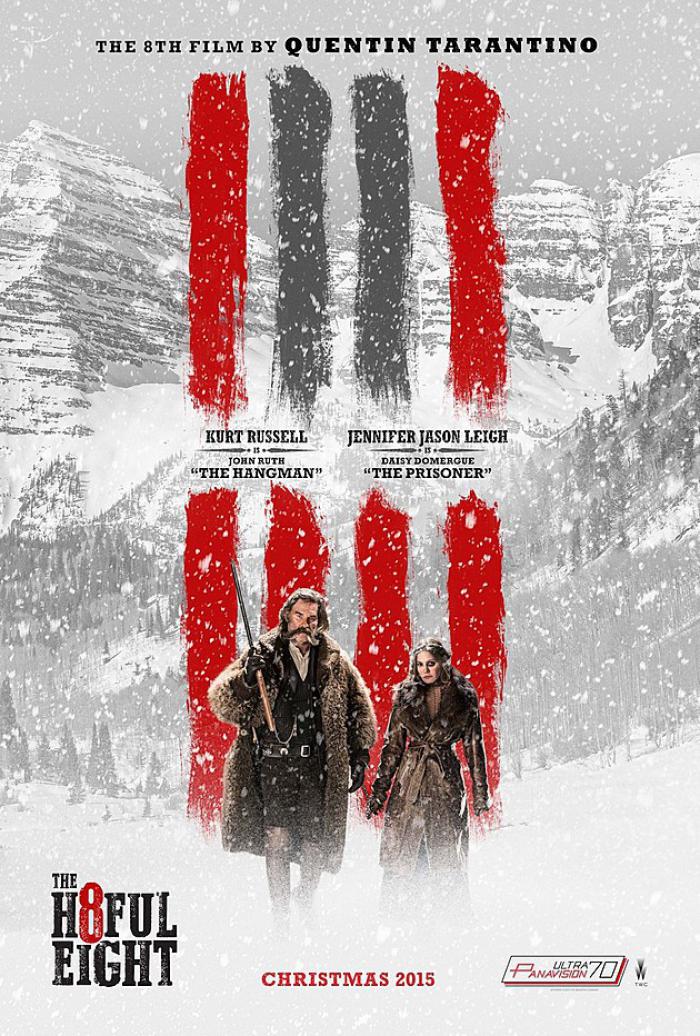There are very few directors, if any, who are as much a scholar of film history as Quentin Tarantino. From his use of allusion to his devotion to old school technology, the man is determined to remind audiences of the “good ol’ days” of cinema. His latest, The Hateful Eight, is perhaps his most overt ode to a bygone era yet.
Only a handful of films in the 50s and 60s were ever made in the Ultra Panavision 70 format– known for its broad scope and stunning clarity, but Tarantino remembered those days and literally dusted off a couple of the old lenses to make his eighth film.
The result is perhaps the most ambitious film of Tarantino’s career, and at times it more than lives up to the hype–it’s a deftly-crafted story with rich performances from a perfect cast–but there are more than a few moments where the feeling starts to creep in that Tarantino is just doing something for the heck of it.
The fact that the film stretches for more than three hours is the first giveaway. At its heart, The Hateful Eight is a rather simple Western story with a mystery thrown in for good measure. Bounty Hunter John Ruth (Kurt Russell) is taking his latest quarry Daisy Domergue (Jennifer Jason Leigh) to the mountain town of Red Rock to be hanged. As his stagecoach plows through the deep Wyoming snow, Ruth comes upon stranded traveler Marquis Warren (Samuel L. Jackson), who talks Ruth into giving him a ride to shelter.
Once they arrive, The Hateful Eight kicks into gear as a locked-room mystery. There are eight people (plus the stagecoach driver) in the cabin, and many of them want at least one of the other people dead. When the bodies do in fact start dropping, Tarantino spins a yarn that is ultimately satisfying, despite the inordinate amount of time it takes to resolve.
Even if you had no idea going in (which would have been a mean feat), there’s no way you wouldn’t know The Hateful Eight is a Tarantino film. His trademark rambling dialogue and overt gore are on full display throughout. There’s no question a full hour of chit-chat and unnecessarily extended scenes could have been exorcised with little or no impact on the story. And as for the violence, The Walking Dead’s Greg Nicotero provided the special (read “bloody”) special make-up effects, so… there’s that.
As for the Ultra Panavision 70, there are moments, to be sure, when Tarantino’s decision to use the format pays off; the stunning vistas of the Wyoming frontier are gorgeous and sprawling, but, alas, the technology goes largely wasted as the vast majority of the film is spent inside a confined log cabin.
Conclusion
Overall, the film is more good than bad, but there’s an even better movie buried somewhere in The Hateful Eight’s lengthy run time. Perhaps someday Tarantino will buck the trend once again– giving us a director’s cut that is actually shorter than the original.
Eh, who are we kidding? This is Tarantino we’re talking about.
Rating
3.5/5 stars
